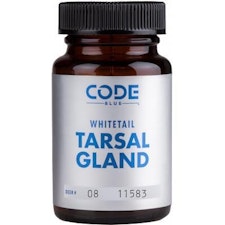
Photo: artran (iStock)
A Walmart prank involving deer urine hit the news cycle, and was one of the top deer-related stories this week. According to NBC-affiliate LEX18 in Lexington, Kentucky, “three boys are facing charges after merchandise was damaged when deer urine spray was released inside a Boyle County Walmart.”
The report, playfully titled, Oh Deer! 3 Boys Charged After Deer Urine Spray Prank Damages Merchandise, said the three boys were quite remorseful.
“Very remorseful, looked at it as a prank,” Police Chief Glenn Doan told LEX18. “I don’t think they had any idea what it could turn into and how it could damage that property, decrease its value and make it unusable.”
The three teenagers were caught on surveillance video opening multiple bottles of deer urine spray and then spraying it, causing $2,000 worth of damage. LEX18 says the boys, “didn’t realize that the smell would linger around the Walmart aisles almost 72 hours later.”
Ah, the smell. While the unique odor reportedly repelled some Walmart shoppers, it's quite seductive for others, particularly deer hunters, who help fuel a sector that some industry groups estimate to be worth $100 million. It’s a musky smell, a doctored-up urine scent, if you will, thanks to the influences of a deer’s tarsal gland, found on the animal's hind leg. The gland produces an oily substance that coats the hair and the bacteria living in the hair is where the musky magic happens.
“Studies have shown a diverse population of different species of bacteria living in the tuft of hair that makes up the tarsal gland,” says Kip Adams in a Quality Deer Management Association (QDMA) article about tarsal glands. Adams is the QDMA’s director of conservation. He’s also a certified wildlife biologist. “These bacteria interact with the compounds from urine in a way that creates the characteristic color and odor.”
This gland is arguably the most important gland in deer communication. It’s so critical to the unique scent of deer urine, some companies that bottle and sell urine to deer hunters include actual tarsal glands in the bottle.
In a literal and plainspoken branding effort, CODE Blue named a product in its deer scent collection Whitetail Tarsal Gland. The deer scent is intended to attract shooter bucks by calling out dominate deer. On the company’s website, Whitetail Tarsal Gland urine is described as an intense odor that arouses territorial curiosity and is made using, “a real tarsal gland submerged in pure buck urine.”

According to QDMA’s Kip Adams, here’s what’s known about the tarsal gland, deer urine and the distinctive, musky odor that reportedly lingered in the aisles of one Kentucky-based Walmart:
- When a deer “rub-urinates”, allowing urine to soak the tarsal gland, the oily secretions absorb certain compounds in the urine.
- Studies have shown a diverse population of different species of bacteria living in the tuft of hair that makes up the tarsal gland. These bacteria interact with the compounds from urine in a way that creates the characteristic color and odor.
- Does, bucks and even fawns rub-urinate year-round, but bucks do it more often in the breeding season, which is why the stain and odor of a buck’s tarsal gland is more prominent during the rut. Changes in the composition of a buck’s urine also likely contribute.
- The exact mix of bacteria is unique from deer to deer, which may give each deer a unique scent that other deer can recognize. This scent is likely deposited in scrapes when a deer rub-urinates and urine flows over the tarsal gland onto the ground. — Courtesy of QDMA
Needless to say, deer urine is far more nuanced that many realize, including the three young men who hosed down the Kentucky Walmart. As LEX18’s Melissa Ratliff wrote in her coverage of the incident, “like the smell, charges are now hanging over the heads of those three kids.”






